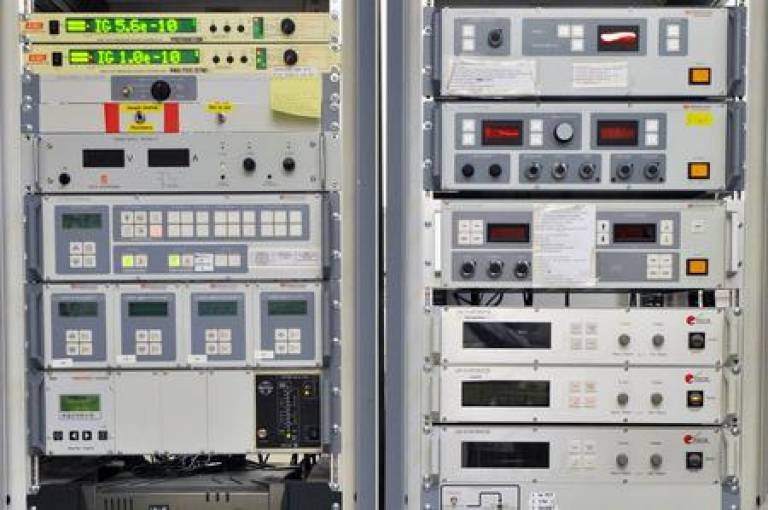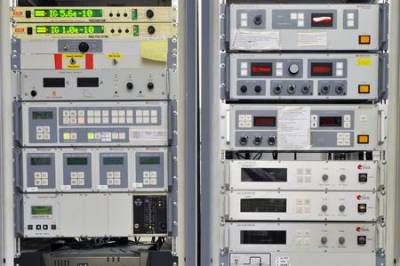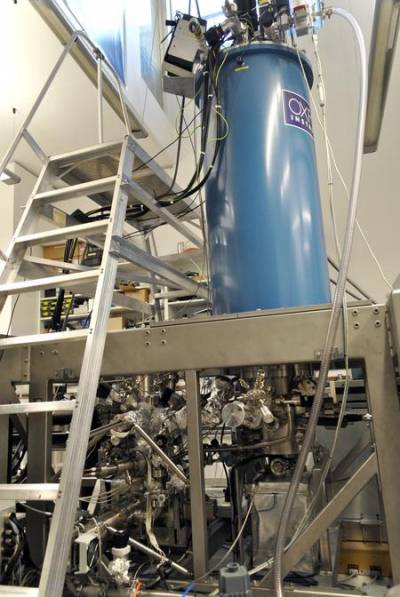Control panel
6 January 2014

Scanning Tunneling Microscopes are devices that allow scientists to 'see' and manipulate objects as small as single atoms.
Optical microscopes, which shine light through a slide and focus it into an eyepiece, have a natural limit to how much they can magnify samples. Even with perfectly designed lenses, these microscopes cannot create images of objects smaller than the wavelength of light. Individual atoms, which are less than 1/1000 of that size, are totally invisible to optical microscopes.
Scanning tunneling microscopes (or STMs) use a totally different process.
Moving a tiny electrode over the surface of a sample, they measure the electrical current passing between the electrode and the sample, a process which is very sensitive to the surface features of the sample. As the probe scans across the surface, the microscope detects tiny variations in the contours of the surface, and builds up an image that shows details on atomic scales.
Unlike optical microscopes, which can be entirely mechanical devices with no electronics at all, scanning tunneling microscopes are complicated, high-tech devices with complex control panels (above).
They can also be rather large - the microscope controlled by the panel above, which is located in the London Centre for Nanotechnology at UCL, is located in a large double-height lab.
Image credit: O. Usher (UCL MAPS)
Links
High resolution image
Control panel
Microscope apparatus
These images can be reproduced freely providing the source is credited
 Close
Close






